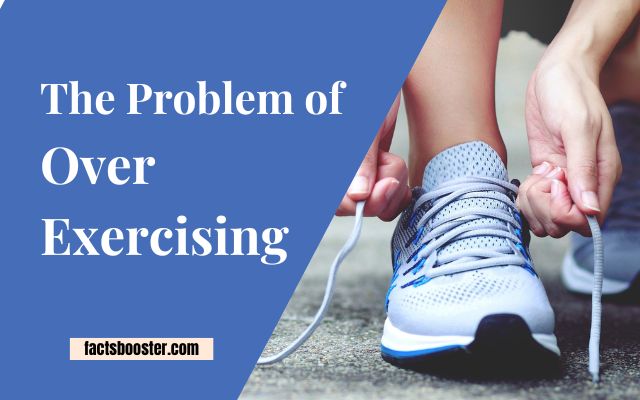I’ve seen it firsthand, when the zeal for a fit body turns into a relentless quest, often leading to over exercising. This is when you’re pushing your body beyond its ability to recover. Think of it like running a car engine on high without ever taking a break—it’s bound to overheat and break down. Over exercising can disrupt your balance, causing both physical and emotional distress.
Spotting the signs early on is key. It’s not just about sore muscles, but a mix of troubles: disrupted sleep patterns, persistent fatigue, decreased performance, and even feelings of depression. Recognizing these early warnings can prevent spiraling into more severe health issues, such as chronic injuries or adrenal fatigue.
It’s almost as though there’s an invisible line in the world of fitness; cross it, and the very exercise meant to strengthen you begins to chip away at your foundation. Acknowledging and respecting this boundary is a decisive step in safeguarding your well-being. Listening to your body’s whispers before they turn into screams can keep you in the zone of optimal health and performance.
Read more:

Signs and Symptoms to Watch For
Working out is a vital component of a healthy lifestyle, but too much exercise can lead to a host of unwanted physical and psychological issues. Recognizing the signs of over exercising is key to maintaining a balanced approach to your fitness routine. For starters, you might experience persistent muscle soreness that doesn’t subside with standard recovery time. This lingering discomfort is the body’s way of signaling that it hasn’t healed fully from previous workouts. Additionally, feel for any unusual or persistent fatigue; it’s one thing to feel tired after a solid session, but quite another when that feeling doesn’t ease with rest.
Pay attention to performance levels, too. Hitting a plateau or witnessing a decline in workout effectiveness could indicate that your body needs a break. On top of these, watch for changes in your heart rate, both at rest and during activity. An elevated resting heart rate or a workout heart rate that spikes more quickly than usual can be signs of overtraining.
From a psychological standpoint, if you find your mood swinging down into irritability or depression, or if your motivation for workouts has waned, it might be time to re-evaluate your exercise intensity and schedule. Sustained mental fatigue and a lack of concentration can also be red flags, as they often go hand-in-hand with the physical strain of over exercising. Remember, your mental health is just as important as your physical condition when carving out a path to overall wellness.
The Science Behind Rest and Recovery
Imagine pushing your body through an intense workout. You’re sweating, your heart is racing, and your muscles are burning with effort. This physical stress triggers microscopic damage to muscle fibers, which then sets off a repair process. Now, here’s where rest enters the scene. Without enough downtime, your body can’t repair and rebuild those muscles. In fact, rest is when your strength gains actually occur. When you give your body a chance to recover, you’re allowing it to adapt to the strain of exercise, increase muscle mass, and improve in strength and performance.
But rest isn’t just about muscles. It’s also the time your body replenishes energy stores and rebalances your hormone levels. Both are vital for maintaining motivation and preventing fatigue. The hormone cortisol, for example, usually spikes during exercise and declines during recovery. If it stays high because of inadequate rest, it can be harder for you to bounce back and can even lead to mood swings and a weakened immune system.
Let’s not forget the central nervous system (CNS), which also takes a hit during workouts. Your CNS is responsible for transmitting messages between your brain and muscles. Overworking it can lead to a slower reaction time and reduced coordination, increasing the risk of injury and undermining performance. So when we talk about rest, we’re talking about giving all elements of our body the time they need to work optimally and support our physical pursuits.
How to Combat Overtraining
Confronting the challenge of overtraining starts with awareness of your body’s signals and a commitment to honoring its need for rest. Acknowledge the drive to push limits, but pair it with the wisdom to know when to pull back. Incorporate variety into your fitness regimen, alternating between high-intensity workouts and low-impact activities. This approach not only reduces injury risks but also keeps your routine fresh and engaging.
Maintaining a workout journal is a practical tool for tracking progress and monitoring for signs of excessive strain. Document your routines, how you feel during and after each session, and the quality of your rest. This record becomes invaluable for identifying patterns and adjusting your plan accordingly.
Listening to your body includes proper nutrition and sleep. Fuel up with foods that boost recovery and invest in sleep quality to support deep healing. If muscle soreness or fatigue persists, be receptive to taking additional recovery time. To bolster your commitment to recovery, partner with a friend or coach who can offer a balanced perspective and keep you accountable.
Finally, gentle mobility work and stretching can promote circulation and aid in recovery. Integrate these practices into your daily routine to support your body’s natural healing processes. Remember, the goal is progress, not perfection. Embrace a balanced fitness philosophy that celebrates both your efforts and your body’s need to recharge.
Essential Nutrients for Recovery
- Protein: After a rigorous workout, your muscles are eager to repair and grow. Consuming protein provides the essential amino acids needed to rebuild muscle tissue, speeding up recovery.
- Carbohydrates: I consider these my energy refill. They replenish depleted glycogen stores, ensuring I have the stamina for my next workout session.
- Omega-3 Fatty Acids: These are anti-inflammatory superstars. They can help to reduce muscle soreness and hasten recovery, allowing me to feel more limber and ready for action.
- Electrolytes: Sweating depletes them, so I make sure to recharge with electrolytes like potassium, sodium, and magnesium to maintain nerve function and muscle control.
- Antioxidants: They’re like my cellular bodyguards, protecting against damage by scavenging free radicals produced during intense exercise. Vitamin C and E are top picks.
- Water: I never underestimate good hydration. Water is vital for every bodily function, including healing, so I always keep my fluid intake high to enhance recovery.
- Calcium: Strong bones are crucial for supporting my muscles, and calcium plays a pivotal role in maintaining bone health, thereby reducing the risk of stress fractures and injuries.
- Vitamin D: It works hand in hand with calcium, aiding in bone strength and immune function. Plus, it can boost my mood on days I’m feeling the strain of recovery.
Managing Exercise Intensity
Managing the intensity of your workouts can feel like a delicate balancing act. You want to push yourself to grow, but not so much that you risk injury or burnout. I’ve learned that tracking my progress with wearable tech helps me stay in tune with my body. Fitness trackers and heart rate monitors provide real-time data, reflecting how my body responds to various exercises. This feedback is crucial in adjusting intensity to match my fitness level and objectives.
Another approach I use is the Rate of Perceived Exertion (RPE) scale. This subjective method allows me to gauge my effort level from 1 to 10 during a workout. It’s a quick internal check without needing any gadgets. When this aligns with the objectives of my fitness regimen—whether it’s light recovery or a high-intensity session—I know I’m on track.
Sometimes I switch it up with structured interval training, such as High-Intensity Interval Training (HIIT) for sharper bursts, or steady-state cardio for endurance. These methods ensure I’m not overstressing my system by accident. Periodization is also key for me: cycling between harder workouts and easier periods allows for consistent improvement while keeping injury risks low. In the end, finding that sweet spot between challenging workouts and adequate rest is personal, but these tools help me map out a path that’s right for my journey.
Creating a Sustainable Workout Routine
I’ve come to understand that sculpting a lasting exercise plan goes beyond mere routine. It’s an artful blend of listening to my body and challenging it appropriately. Adopting a mindful approach means I keep workouts diverse and fun, aiming to engage different muscle groups and incorporate various types of training such as cardio, strength, and flexibility exercises.
Smart scheduling is key. I alternate high-intensity sessions with moderate ones, allowing my muscles adequate time to heal. Aiming for two to three intense workouts a week with light or moderate exercise in between keeps me from hitting a plateau or, worse, injuring myself.
Tracking progress is incredibly motivating. Whether it’s improving my run time or increasing my weights, each little victory propels me forward. Yet, I’m careful not to let numbers define my entire journey. If I’m feeling worn out, a step back is warranted, embracing a lighter week or delving into a different activity that reignites my spark for movement.
Lastly, I never underestimate the power of a support system. Friends, fitness communities, or a personal trainer not only provide an extra push on those sluggish days but also hold me accountable, ensuring I maintain the fine line between pushing my limits and crossing into burnout territory.
Rest Days: Planning & Activities
Recognizing the value of rest days is a game-changer for your training. They allow your muscles to repair, rebuild and strengthen. Think of it as hitting the reset button for your body, giving it the pause it desperately needs to recharge. To weave rest into your routine, aim for at least one full day of rest after every three to five days of intense workouts. Listen to your body, though; it might send signals that you need a breather sooner than your schedule suggests.
So, what to do on your day off? It’s not about staying glued to the couch—though sometimes, that’s precisely what’s needed. Instead, consider light activities like a leisurely walk in nature, a refreshing swim, or a laid-back bike ride. These can boost circulation, helping to alleviate muscle stiffness. For those craving a touch of leisure, activities like reading a book or indulging in a soothing bath can also promote recovery by reducing mental strain, just as important for overall well-being.
- Plan Ahead: Mark rest days on your calendar just as you would any important appointment.
- Diversify Rest Activities: Mix in passive and active recovery strategies to find what makes you feel best.
- Listen to Your Body: Adapt your schedule if you notice signs of tiredness or prolonged muscle soreness.
When to Seek Professional Help
Sometimes, despite our best efforts to listen to our bodies and adjust our routines, we may find ourselves grappling with workout-related issues that just don’t seem to resolve. Recognizing when to seek expert guidance is key in these moments. If you notice persistent pain that doesn’t improve with rest, or if you’re dealing with recurring injuries, it might be time to consult with a medical professional. They can assess whether there’s a deeper issue like an underlying health condition or if your form needs correction to avoid further harm.
Similarly, if you’re feeling constantly drained, even on days you haven’t worked out, this could be a sign of overtraining syndrome. A sports nutritionist or a fitness coach can help analyze your regimen and diet to ensure you’re fueling and recovering properly. Lastly, don’t overlook your mental health. If exercise is causing you more stress than relief, or if you can’t shake the sense of guilt on rest days, a mental health professional can support you in finding a healthier balance.
Always remember, reaching out for professional assistance is a proactive step towards safeguarding your health, ensuring you stay on track towards your fitness goals without compromising your well-being.
Finding Your Gym Harmony
Finding that sweet spot between pushing our limits and taking time to recover is key. It’s like a dance, where both rest and activity lead. Skipping on sleep or ignoring sore muscles can set us back rather than propel us forward. But when we listen to our bodies and respect their need for downtime, that’s when we thrive.
Balance is personal. What works for me might not for you, and that’s perfectly okay. Discovery is part of the journey. Testing different routines, tweaking our diets, and adjusting our rest days—these are the steps we take towards our unique rhythm. It’s crucial that we stay alert to our body’s signals and respond with care.
Embrace the rhythm of your body. Respect its cues. And celebrate the rest as much as the rush of a good workout. Together, activity and recovery create a symphony of wellness, each note essential to the melody of physical health. Dance to it, find joy in it, and make it wholly yours.


